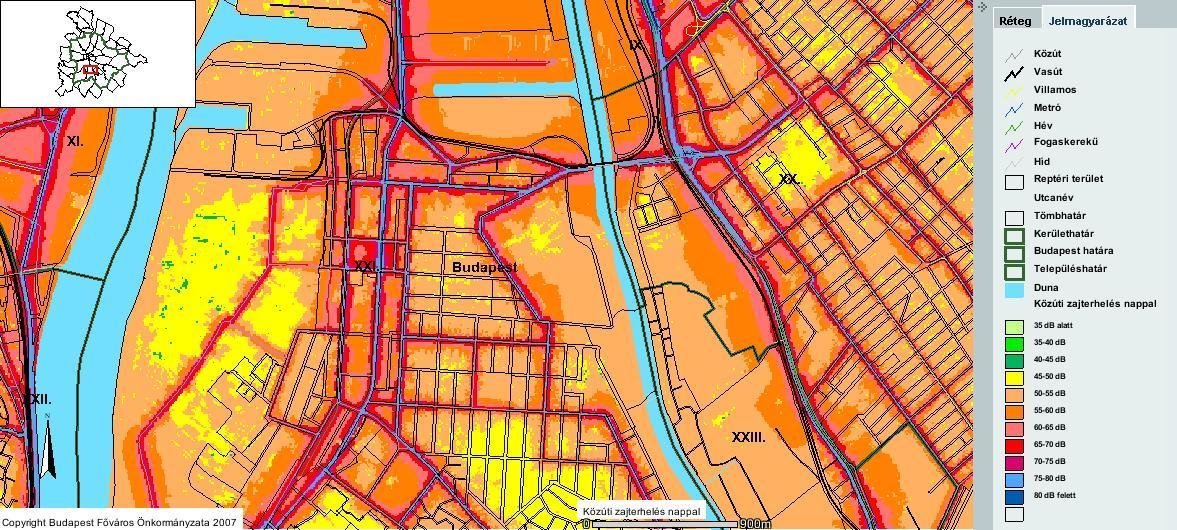New noise map is being made in Budapest
Szeretlekmagyarorszag.hu reports that preparations of making a new noise map of Budapest has begun.
The first noise map of the city was created in 2007, hence it is now appropriate to renew it. After air pollution, noise is the main source of environmental damages. To preserve the quality of life, the European Union orders every city which has more than 100 thousand inhabitants to depict strategic noise maps. These are serving as guide for new construction projects or for development and planning of city traffic, said Kvojka Ferenc, secretary general of the NGO.
Budapest will be covered with a densely woven virtual net, which will record noise pollution in different times of day at 20 million points of the capital city. 240 million bits of recorded data has to be evaluated and averaged for the completion of the new noise map.
That is how the current noise map was outlined back in 2007, but it has became outdated by now due to the investments of the past few years. The meanwhile yielded M0 ringroad, as well as the Megyeri bridge, the renovated Margaret bridge, the metroline 4 and the rebuilt Kossuth square have caused significant changes in the noise pollution of their own surroundings. The noise barrier system constructed along the access road section of the M3 and M5 motorways also have a noticeable impact on the area’s noise pollution.
The M0 ringroad has a positive impact on almost the entire city, since heavy vehicles are no longer rumbling on the roads, thus the noise pollution has significantly decreased in Hungária boulevard as well.
Budapest is a generally noisy metropolis compared to other capital cities of Europe. Since the calculating methods are differ in each state, drawing accurate comparisons is difficult. People sense noise in a subjective way, it depends on several factors how much it disturbs the residents.
According to the measurements, the most noise polluted areas of Budapest are the access road sections of motorways, like the area of Rákospalota cemetery near M3 freeway. The quiescence of the Margaret island is relative as well, as the noise caused by the traffic of the wharves of Pest and Buda can be heard in the island. These noises are reaching 40-50 decibels even at nighttime, while “the sound of the silence” is maximum 25-30 decibels by undisturbed night’s sleep. 120 decibels sound causes damage even in human health.
Creating noise maps is a complicated scientific job, based on the work of physicists, acousticians, surveyors and computer scientists. Optikai, Akusztikai, Film- és Színháztechnikai Tudományos Egyesület (Optical, Acoustic, Film and Theater Technology Scientific Society) is going to supervise professionally the creation of the new noise map. The city leadership is putting out a competition for the completion of the map shortly.
translated by Zsófia Luca Szemes from szeretlekmagyarorszag.hu
Photo: csepel.info
Source: http://dailynewshungary.com/
please make a donation here
Hot news
Saint George’s Day in Hungary: folklore about witches and customs related to the beginning of spring
Hungary to prepare EU’s 2025 budget
What happened in Hungary today? — 23 April, 2024
According to Hungarian House Speaker Kövér, Europe lags behind global competitors
McDonald’s in Hungary: Popular fast food chain expands further in Hungary
International cooperation: Police arrest Slovak arms dealers in Hungary and Slovakia


